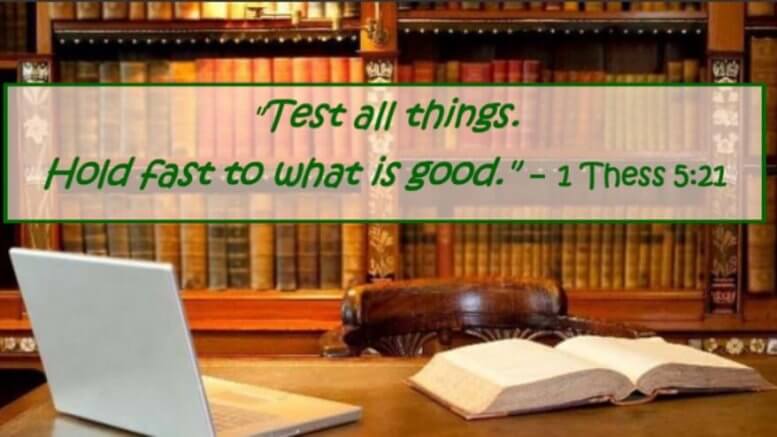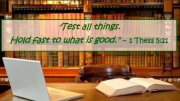Playback speed:
By Sandy Szwarc
© Szwarc 2025
Literate and Self-Educated
Through much of the 19th century, Americans were surprisingly literate and educated, self taught and home schooled in reading, writing, and numbers, as well as history, science and critical thinking, and moral character. Education and the Biblical principles that shaped our country were highly valued and Americans were educating themselves quite well. As the population grew, homeschooling was augmented in community primary schools, supported by local parents, churches and townspeople.
 There was no internet, people read books, newspapers, and the Bible. Thomas Paine’s book, Common Sense, first printed in 1776, reportedly sold 120,000 to 150,000 copies in the first three months (to an estimated population of Colonists of 2.5 million).
There was no internet, people read books, newspapers, and the Bible. Thomas Paine’s book, Common Sense, first printed in 1776, reportedly sold 120,000 to 150,000 copies in the first three months (to an estimated population of Colonists of 2.5 million).
America’s literacy was impressive for the time and compared to other places around the world. In 1800, the Columbian Phenix and Boston Review reported that “no country on the face of the earth can boast of a larger proportion of inhabitants, versed in the rudiments of science, or fewer, who are not able to read and write their names, than the United States of America.” By 1849, literacy in the North was 91-97% and 81% in the South, with Massachusetts literacy reported as 98%.
According to the Journal of Education (January 1828):
“Our population is 12,000,000, for the education of which, we have 50 colleges, besides several times the number of well endowed and flourishing academies leaving primary schools out of the account … we have about 600 newspapers and periodical journals. There is no country, (it is often said), where the means of intelligence are so generally enjoyed by all ranks and where knowledge is so generally diffused among the lower orders of the community, as in our own.”
And all of this was done without the federal government. In keeping with America’s founding, most citizens back then followed Biblical teachings and took personal responsibility for their actions, parents for the teaching of their children, and bore their own load trusting in God. Two key figures in America’s history would change our long-standing free enterprise of schooling. These men were behind the one-two punch that transformed America’s schools into government tools of globalism indoctrination to build a “new social order.” First, schools and schooling would be given to the state and attendance by every child made compulsory. Then, the knock-out punch would rewrite curriculums and textbooks to teach Marxism, in the name of progressive education.
Horace Mann – The Nationalization of Schools
 Horace Mann is called the Father of American Education, but more correctly was the Father of America’s Public School System. He led the progressive transformation of America’s schools to public (government) schools, with his campaign for “common schools” and universal public education of all children. His unpatriotic aims were revealed in his condescending views of Americans as ill-informed and American freedoms as frightening. He believed a free people were a threat to society…or, more specifically, to his vision of a utopian society.
Horace Mann is called the Father of American Education, but more correctly was the Father of America’s Public School System. He led the progressive transformation of America’s schools to public (government) schools, with his campaign for “common schools” and universal public education of all children. His unpatriotic aims were revealed in his condescending views of Americans as ill-informed and American freedoms as frightening. He believed a free people were a threat to society…or, more specifically, to his vision of a utopian society.
In 1837, he was appointed secretary of the first government educational board in the U.S., the newly created Massachusetts Board of Education. The first pages of his Common School Journal, published in 1838, even wrote of the dangers of empowering the majority of “ignorant and licentious foolish masses” through elections and the ballot-box. “Mann was downright distrustful of democratic institutions, such as town meetings and political parties,” said his biographer, Bob P Taylor.
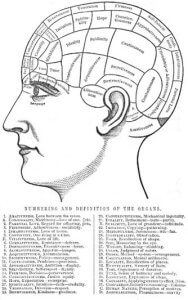 Mann also held that sectarian religion had to be excluded from classrooms (ensuring no religious denomination was taught). Hence, he opposed introducing any positive religious instruction into schools, such as commentary about the Bible. He believed the schools should only teach common universal ethical principles. As a Unitarian (similar to the contemporary liberal evangelical movement) and devotee of the pseudoscientific ideology of phrenology, Mann did not hold to the Christian beliefs or the Bible of the Protestant Puritans who’d founded America’s early schools. His liberal nonsectarian ideas were hotly resisted by Christian Protestants, who called him out for his non-Christian beliefs, and by Roman Catholics, who wanted their Bible doctrine taught.
Mann also held that sectarian religion had to be excluded from classrooms (ensuring no religious denomination was taught). Hence, he opposed introducing any positive religious instruction into schools, such as commentary about the Bible. He believed the schools should only teach common universal ethical principles. As a Unitarian (similar to the contemporary liberal evangelical movement) and devotee of the pseudoscientific ideology of phrenology, Mann did not hold to the Christian beliefs or the Bible of the Protestant Puritans who’d founded America’s early schools. His liberal nonsectarian ideas were hotly resisted by Christian Protestants, who called him out for his non-Christian beliefs, and by Roman Catholics, who wanted their Bible doctrine taught.
Not surprisingly, under the pretext of neutrality, the separation of school classrooms from any particular faith soon became the disestablishment of all faith.
Under Mann, America’s school system would come to be modeled after that of Prussia, which had the first compulsory, centralized, and uniform school system controlled and funded by the German state. Education by the state would be “free“ but compulsory.
 The modern movement for compulsory state education actually began during the Reformation, and Martin Luther was considered to be a primary force. Luther preached that Christians are to be taught and that parents should be the teachers of their children based on the Holy Scripture, “to bring up children to serve God, to praise and honor him.” But should parents fail, it was the responsibility of the collective, he wrote, and the State must exterminate error and could not tolerate heresy or heretics, “for no secular prince can permit his subjects to be divided by the preaching of opposite doctrines.”
The modern movement for compulsory state education actually began during the Reformation, and Martin Luther was considered to be a primary force. Luther preached that Christians are to be taught and that parents should be the teachers of their children based on the Holy Scripture, “to bring up children to serve God, to praise and honor him.” But should parents fail, it was the responsibility of the collective, he wrote, and the State must exterminate error and could not tolerate heresy or heretics, “for no secular prince can permit his subjects to be divided by the preaching of opposite doctrines.”
Addressing German rulers in 1524, he said it was their duty, for the sake of a strong military and the accumulation of wealth in state’s cities and principalities, to enact laws forcing parents to send their children to school and that all children attend. He similarly called for obedience to the State and persecution of all dissenters.
After traveling to German in 1843, Mann recognized the dark nature of the German model but was enamored by the power of systematically controlling people’s attitudes and allegiances. He saw education as the perfect vehicle for social engineering. Mann was adamant that efforts to control human propensities “must be mainly done during the docile and teachable years of childhood.” Under state-controlled education with forced warehousing of children until adulthood, the masses “yield themselves with perfect docility into our molding hands.”
Mann was largely responsible for creating America’s government school system, removing parental and local control of educating children; undermining individual freedoms; stripping children of creativity, responsibility and self reliance, independence, critical thinking and personal initiatives; and creating submissive students who were “automata,” following whatever they were told. Mann often spoke of the evils of truancy and began to elicit support for his mandatory, state-controlled school idea.
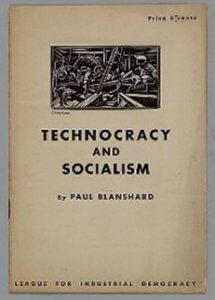 Within decades of relentless campaigning to bring Prussia’s model here, education bureaucrats across America were echoing the sentiments that school was no longer about learning or intellectual development but, instead, about conditioning students to a socialistic collective life and surrendering for the greater good. Worse, that the state is the true parent of children and had authority over their education. To Mann, the government’s role was paternalistic and under its control, students, and in time the entire populace, would become more child-like and dependent.
Within decades of relentless campaigning to bring Prussia’s model here, education bureaucrats across America were echoing the sentiments that school was no longer about learning or intellectual development but, instead, about conditioning students to a socialistic collective life and surrendering for the greater good. Worse, that the state is the true parent of children and had authority over their education. To Mann, the government’s role was paternalistic and under its control, students, and in time the entire populace, would become more child-like and dependent.
Early on, he met resistance from the majority of Americans. Most Americans wanted to retain local control of public institutions and have choices in their children’s schooling and their religious teachings. Even the 1892 Democratic Party National Platform “opposed state interference into parental rights and rights of conscience in the education of their children.” Mann would double down on his efforts, even attacking parents and private schools.
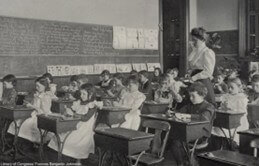 Putting teachers on the public payroll, ensuring permanent domination and lifetime financial and bureaucratic power, proved an effective tactic. The voices of professional “experts,” teachers and education societies grew. The National Teachers Association (later renamed the National Education Association) was organized in the mid-1800s to lobby for public education. In 1897, the NEA resolved to support state laws. By 1918, all states had passed compulsory school attendance laws, although full enforcement of the laws wasn’t completed until the 1930s.
Putting teachers on the public payroll, ensuring permanent domination and lifetime financial and bureaucratic power, proved an effective tactic. The voices of professional “experts,” teachers and education societies grew. The National Teachers Association (later renamed the National Education Association) was organized in the mid-1800s to lobby for public education. In 1897, the NEA resolved to support state laws. By 1918, all states had passed compulsory school attendance laws, although full enforcement of the laws wasn’t completed until the 1930s.
The NEA has since grown into the largest political and lobbying organization in the country, controlling teaching standards and school curriculum mandates, all following progressive, radical liberal agendas and reforms.
Under Mann’s socialist-style schooling, children were divided by age grading, subject, and continually ranked and sorted by performance on standardized tests. By standardizing everything, the actual aim of compulsory “universal” schooling was to reduce everyone to the same level, to breed and train a homogenous citizenry, and remove any dissent and originality, H.L. Mencken wrote. Students would be manipulated to have fixed, predictable reactions to authority, shut down their own critical judgments, not challenge authority, and be trained to conform: to think and act as alike as possible. Creating this mindless, obedient herd mentality, while useful for the state and commercial interests, meant dummying everything down. Public schools “are responsible, more than any other agency, for the present pathetic helplessness of the American people,” Mencken wrote.
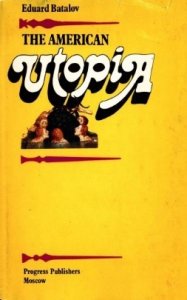 By 1917, American public schools were administered by a select elite − representatives from Rockefeller, Carnegie, Harvard, Stanford, the University of Chicago, and the NEA, who called themselves the “Education Trust,” (not unlike today’s far left-leaning EdTrust founded in 1996). Their main motivation was to impose a liberal progressive schooling that would bring the entire population into conformity under their direction. Education, in their utopian vision, had nothing to do with what parents, children or communities believed or wanted, but to meet the needs of the political state and corporate economic powers. Education would become subordinate to “experts,” (“technocrats“) who knew better than the people.
By 1917, American public schools were administered by a select elite − representatives from Rockefeller, Carnegie, Harvard, Stanford, the University of Chicago, and the NEA, who called themselves the “Education Trust,” (not unlike today’s far left-leaning EdTrust founded in 1996). Their main motivation was to impose a liberal progressive schooling that would bring the entire population into conformity under their direction. Education, in their utopian vision, had nothing to do with what parents, children or communities believed or wanted, but to meet the needs of the political state and corporate economic powers. Education would become subordinate to “experts,” (“technocrats“) who knew better than the people.
See what happened in just a few decades? Biblical teachings, commanding fathers to diligently teach their children in all things and train up a child in the way he should go, were abandoned. With the lure of “free” and subsidized education, children’s educations were turned over to the state, and parents were led to believe that technocratic experts knew best. “Free for all” was made to sound reasoned, fair and equitable, and for the common good. The state, in control of the purse strings, then controlled what all children were taught, what they would be permitted to think and believe, and what they must do. Education philosophers (most globalists in disguise) would use their experimental psycho-social theories to manipulate young minds … with disastrous results for children and our nation. Bible warnings had gone unheeded:
” See to it that no one takes you captive through philosophy and empty deception, which are based on human tradition and the spiritual forces of the world rather than on Christ.” (Col 2:8)
March of the Experts – Education Technocrats
 As we’ll see, the experts really didn’t know best. Publicly funded government education became an irresistible epicenter for hundreds of social-psychological “learning theories,” all seeking influence. During the massive reformation and nationalization of American schools from the early 1900s, experimental educational psychological theories exploded – theories − none of which had sound evidence they worked to benefit children.
As we’ll see, the experts really didn’t know best. Publicly funded government education became an irresistible epicenter for hundreds of social-psychological “learning theories,” all seeking influence. During the massive reformation and nationalization of American schools from the early 1900s, experimental educational psychological theories exploded – theories − none of which had sound evidence they worked to benefit children.
Two of the most influential theorists in progressive education were John Dewey (1859-1952) and Jean Piaget (1896-1980). Both of their theories have been critically challenged as pseudo-learning.
After 1967, public schools even more radically deviated from education, into full-scale psychological experimentation of children. The coordinated efforts of special interests, global corporations, foundations and nonprofits, and government agencies – gripping school systems through massive funding – took over school curriculums and teacher training. They embraced a mind-numbing array of psychological theories to manipulate behavior and learning. Teacher training became social behavioral psychology, and teaching became a “science.”
The massive “Behavioral Science Teacher Education Project” and “Biological Sciences Curriculum Study,” for example, were such government initiatives. Professors at the University of Texas at Austin responded with new theories and science teacher education of teacher behaviors and student learning, many based on Piaget’s theories, despite criticisms of many scholars and lack of evidence. America’s schools continue today to be bombarded with “new ideas” about learning and teaching, according to the NEA.
John Dewey – Progressive Education for a New Social Order
As John Stormer wrote in None Dare Call it Treason, the philosopher and experimental psychologist John Dewey at Columbia University became the most influential man in American education.
From his prominent position at Columbia, Dewey developed his own educational philosophy and produced 37 volumes of work on transforming public education from biblical principles to secularism. He also became the president of the American Psychological Association in 1899 − a created nonscientific field that would go on to advocate for a wide range of socialist-globalist ideologies.
 Today, APA produces professional guidelines and textbooks infested with DEI, racism and identity politics, CRT, toxic masculinity, abortion, the “psychological problem” of greenhouse gas emissions, open borders, “microaggressions,” human behavior in global climate change, and LGBTQ – all under the guise of science. APA’s “Magination Press” publishes children’s books (promoted to librarians) filled with psychological-behavioral messages towards non-Biblical views on gender, climate crisis, immigration, family, social justice, growing up, and spiritual mindfulness.
Today, APA produces professional guidelines and textbooks infested with DEI, racism and identity politics, CRT, toxic masculinity, abortion, the “psychological problem” of greenhouse gas emissions, open borders, “microaggressions,” human behavior in global climate change, and LGBTQ – all under the guise of science. APA’s “Magination Press” publishes children’s books (promoted to librarians) filled with psychological-behavioral messages towards non-Biblical views on gender, climate crisis, immigration, family, social justice, growing up, and spiritual mindfulness.
Dewey heavily influenced psychological theories on socialism, metaphysics, evolution, racism, religion and liberal education. Under him, 20% of all American school superintendents and 40% of all teacher college heads had advanced degrees from Columbia and adopted Dewey’s experimental theories. He not only influenced teacher education, but what was taught to American children would be radically changed under his unproven theories of “progressive education.”
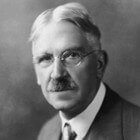 Dewey did not believe in God. He was a famous humanist and original signer of the Humanist Manifesto I. This manifesto was an atheist creed – the most significant statement of atheistic philosophy in the first half of the twentieth century. It rejected the religious ideas of our fathers, denied God’s creation, opposed the Bible and Biblical teachings, followed naturism and evolution, believed in a universal society where people cooperate for the common good, and that the pursuit of “the good life” was man’s most important endeavor.
Dewey did not believe in God. He was a famous humanist and original signer of the Humanist Manifesto I. This manifesto was an atheist creed – the most significant statement of atheistic philosophy in the first half of the twentieth century. It rejected the religious ideas of our fathers, denied God’s creation, opposed the Bible and Biblical teachings, followed naturism and evolution, believed in a universal society where people cooperate for the common good, and that the pursuit of “the good life” was man’s most important endeavor.
Dewey rejected absolute moral laws or truths. For Christians and patriotic Americans, of course, there is no such thing as neutrality in spiritual matters − morality is not subjective or abandoned in the name of tolerance, cultural acceptance, political gain, or hedonism. Truths are absolute and upheld in God’s Word. Dewey denied God and followed the Marxist concept that man is without a soul or free will, wrote Stormer. Dewey concluded that “teaching children any of the absolutes of morals, government, or ethics was a waste of time.”
There was no doubt that Dewey was against everything America and Christians traditionally hold dear. He also sharply detoured from the long-held meaning of education.
Dewey believed that education was primarily a social instrument. Under his teaching theories, the social group was taught to hold the greatest importance. Children were to most value getting along with the group. No child could succeed or excel ahead of another in the group, nor could any one be left behind because of poor work − those could disrupt the group. Grades and reports cards, competition, rivalry, and personal excellence were all discarded. Among Dewey’s other education theories was the elimination of rules of grammar, spelling, the ABCs, penmanship, multiplication tables and other “old-fashioned” instructional techniques. Instead, he believed in kids learning experientially. Rooted in his philosophy was another belief that went against Christian teachings: that immoral or unethical conduct could be justified by rationalizing that “everyone does it.”
Instead of teaching science purely objectively, or literature as simply the expression of thought, he said, teaching should be a tool to interpret and control the experience and bring students to share ideas and feelings of the social group. “I believe,” he wrote in My Pedagogic Creed, “that education must be conceived as a continuing reconstruction of experience.” He also held that every teacher is “set apart for the maintenance of proper social order and the securing of the right social growth.”
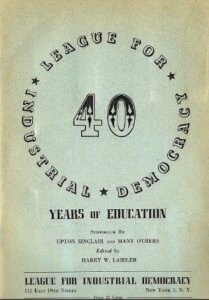 Dewey was a committed socialist and Honorary National President of the League for Industrial Democracy, originally name Intercollegiate Socialist Society (ISS), founded in 1905. The LIDs were socialist intellectuals promoting “an intelligent interest in socialism among college men and women.” Calling itself “an educational and propagandist organization” and “collectivist or socialist,” LID worked to awaken awareness and arouse zeal for socialists causes such as social justice, class struggles, racial equality, labor organizing, and protesting capitalism.
Dewey was a committed socialist and Honorary National President of the League for Industrial Democracy, originally name Intercollegiate Socialist Society (ISS), founded in 1905. The LIDs were socialist intellectuals promoting “an intelligent interest in socialism among college men and women.” Calling itself “an educational and propagandist organization” and “collectivist or socialist,” LID worked to awaken awareness and arouse zeal for socialists causes such as social justice, class struggles, racial equality, labor organizing, and protesting capitalism.
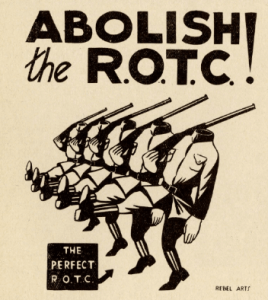 Its “militant” student division, described in Students in Revolt, worked on college campuses to apprentice “prophets and makers of socialism in the United States.” The students even actively campaigned to rid campuses of ROTC.
Its “militant” student division, described in Students in Revolt, worked on college campuses to apprentice “prophets and makers of socialism in the United States.” The students even actively campaigned to rid campuses of ROTC.
Its report on its widespread marketing successes during its first 30 years (1905-1935), written while Dewey was Vice President, said:
“That a change in the social order must take place is obvious. Whether this change will take place peacefully by general consent in the light of reason and intelligence … or will occur in the face of violent opposition on the part of classes entrenched in possess and privilege is the crucial question for the future.”
Their activist work supported the movement by “preparing the minds of men for change” and appealing to their “social intelligence and sense of social justice.” Their appeal to intelligence was defined as “the belief that individualism, laissez faire, and the profit motive must give way to socially planned enterprise and activity directed to the general good.” They recognized Dewey’s book, Education and a New Social Order, which called upon educators to lead the way to social change.
Dewey’s Disciples – Socialists Rewrite America’s Textbooks
While at Columbia University, Dewey gathered a following of young teaching students calling themselves the “Frontier Thinkers,” led by his student George Counts, along with Harold Rugg. During the 1920s and 1930s these progressive educators developed the education movement – “Social Reconstruction” – using schools for social reform with the goal of creating a more “equitable society.” It was influenced by Karl Marx and other socialist philosophers. Their teaching concepts focused on looking at what’s wrong with American society, stirring students’ emotions 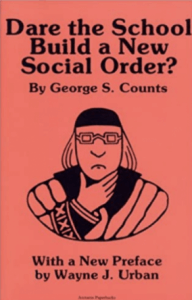 about social inequities and fairness, and leading kids to become activist agents of change.
about social inequities and fairness, and leading kids to become activist agents of change.
George Counts became its leading activist teacher, writing the early pamphlet on their movement, called Dare the School Build a New Social Order? in 1932. He called upon teachers to become a social force through powerful organizations where they could exercise a larger measure of control over schools and curriculum. Counts served as president of the American Federation of Teachers from 1939-1942 and later helped organize the liberal party. The Frontier Thinkers not only became active in teachers organizations, capturing the top jobs and control of the NEA, they also rewrote textbooks, according to Stormer.
Counts would write a 17-volume on American education, financed by the Carnegie Corporation. His writings included Soviet systems of mind control and American socialism.
He wrote on the role of schools in drastically remaking our country’s economic system to bring socialist changes and rid it of capitalism, individualism of the pioneer and farmer, and freedoms.
Harold Rugg wrote the new textbooks that were needed. “Five million school children “learned” American political and economic history and structure in the 1930’s from 14 social studies textbooks Rugg authored,” said Stormer. These “social science” textbooks filed with “social criticism” were openly socialist propaganda. They degraded American heroes, American history and our Constitution with such strong anti-religious bias, the public rebelled.
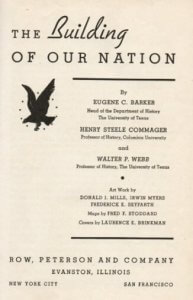 The NEA then began promoting a new set of social studies textbooks – called the Building America series (1935-1948) − to replace Rugg’s. History professors from the University of Texas and Columbia tried to be more subtle and clever in promoting socialism, but the books were clearly Marxist and denigrated American traditions. American history was presented as primarily a class struggle and the motives of the writers of the U.S. Constitution openly vilified.
The NEA then began promoting a new set of social studies textbooks – called the Building America series (1935-1948) − to replace Rugg’s. History professors from the University of Texas and Columbia tried to be more subtle and clever in promoting socialism, but the books were clearly Marxist and denigrated American traditions. American history was presented as primarily a class struggle and the motives of the writers of the U.S. Constitution openly vilified.
A 1954 California Senate Investigation Committee condemned the series and reported that 1l3 Communist-front organizations had contributed the material and 50 Communist front authors were connected with it. Among the authors were the Webbs, who were with the Fabian Socialist movement in Great Britain. But these and similar texts for history, government and civics continued to be used through the 20th century.
After World War II, the demolition of children’s love of country and patriotism, along with faith in God and family, would go from Marxist propaganda to full-scale globalism, spearheaded by the NEA and global powers within our country and our churches. The final nail in Christian morals and American patriotism is targeted for the next five years as their vision of a “new social order” is almost complete.
Look for the next part of this series which reveals how science and school science education were specifically targeted to transform schools into training centers for globalism ideologies. Generations of students and Americans fell into lockstep, not realizing where they were being led. And the march continues today.
Other articles in this series:
Part 1 American Immigrant a Century Ago: https://vachristian.org/the-american-immigrant-one-century-ago/
Part 2 American Patriotism Time Travel:
https://vachristian.org/american-patriotism-time-travel/
Part 3 Evolution of America’s Classrooms: https://vachristian.org/evolution-of-americas-school-classrooms/

